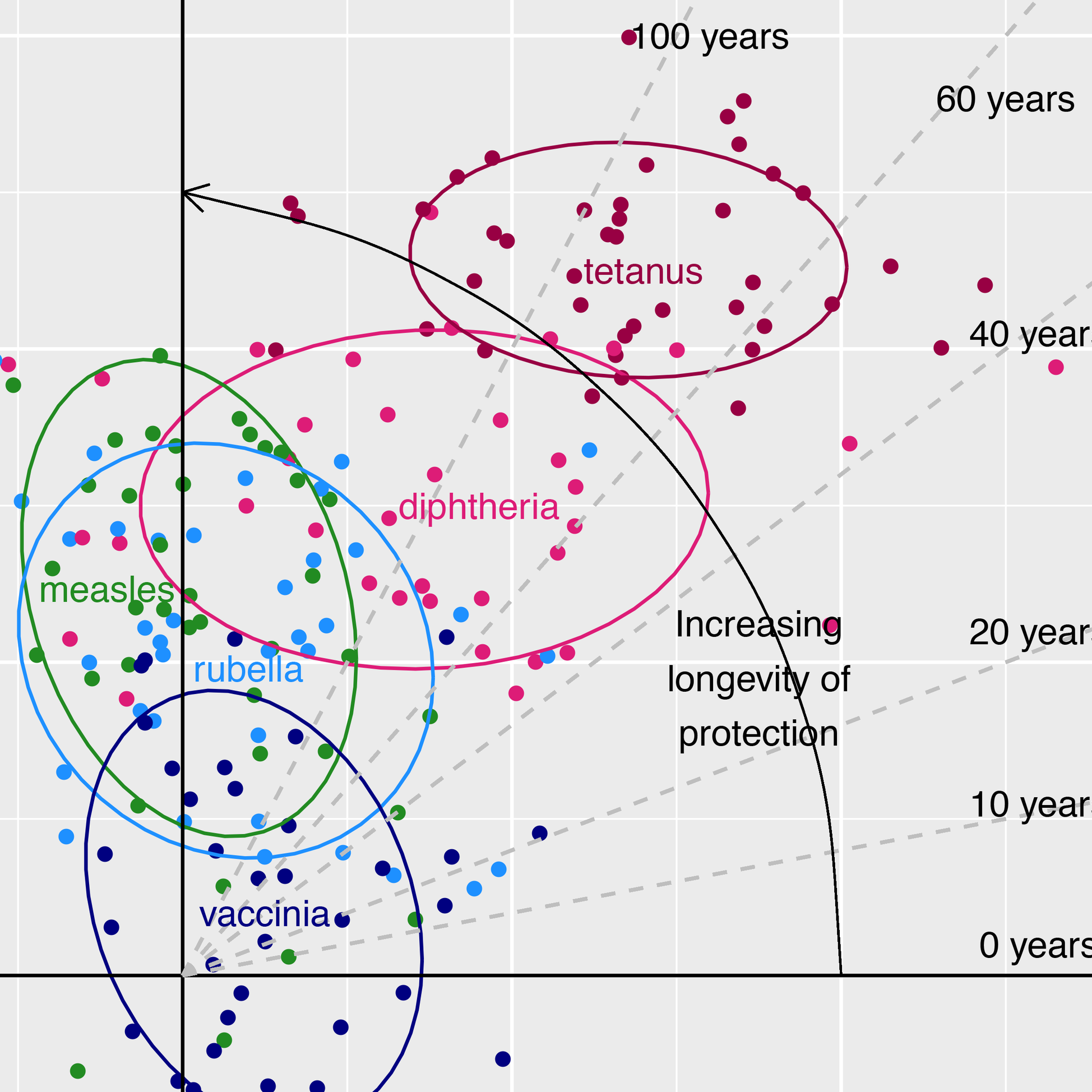Alice Antia, Hasan Ahmed, Andreas Handel, Nichole E. Carlson, Ian J. Amanna, Rustom Antia, Mark Slifka
PLOS Biology
August 10, 2018
ABSTRACT
Determining the duration of protective immunity requires quantifying the magnitude and rate of loss of antibodies to different virus and vaccine antigens. A key complication is heterogeneity in both the magnitude and decay rate of responses of different individuals to a given vaccine, as well as of a given individual to different vaccines. We analyzed longitudinal data on antibody titers in 45 individuals to characterize the extent of this heterogeneity and used models to determine how it affected the longevity of protective immunity to measles, rubella, vaccinia, tetanus, and diphtheria. Our analysis showed that the magnitude of responses in different individuals varied between 12- and 200-fold (95% coverage) depending on the antigen. Heterogeneity in the magnitude and decay rate contribute comparably to variation in the longevity of protective immunity between different individuals. We found that some individuals have, on average, slightly longer-lasting memory than others—on average, they have higher antibody levels with slower decay rates. We identified different patterns for the loss of protective levels of antibodies to different vaccine and virus antigens. Specifically, we found that for the first 25 to 50 years, virtually all individuals have protective antibody titers against diphtheria and tetanus, respectively, but about 10% of the population subsequently lose protective immunity per decade. In contrast, at the outset, not all individuals had protective titers against measles, rubella, and vaccinia. However, these antibody titers wane much more slowly, with a loss of protective immunity in only 1% to 3% of the population per decade. Our results highlight the importance of long-term longitudinal studies for estimating the duration of protective immunity and suggest both how vaccines might be improved and how boosting schedules might be reevaluated.

